What Is Enterprise AI and How to Implement It


Enterprise AI is already being used to resolve support queries, generate reports, summarise data, and assist teams across functions.
Companies are applying it inside tools their teams already using in Slack, CRMs, dashboards to speed up work without adding new layers of complexity.
A study from Grand View Research, the enterprise AI market is projected to reach $31.5 billion in 2025, and grow to $155.2 billion by 2030. The growth reflects a shift in how businesses approach scale and efficiency.
Most Consumer AI tools are built for individual use. But enterprise use requires more— custom requirements, data security, team access controls, integration with internal systems, and reliability across use cases.
In this blog, you’ll find:
If you’re building AI for teams, this guide will help you stay focused on practical use—not features that look good in demos but don’t hold up in real work.

Enterprise Artificial Intelligence (AI) refers to AI technologies and systems built specifically for large organisations to optimise operations, improve decision-making, and deliver measurable business impact.
It goes beyond basic automation by integrating AI models, data pipelines, and workflow orchestration directly into the company’s core infrastructure.
An AI enterprise solution typically operates across multiple departments, including customer support, finance, HR, supply chain, and product development, helping to improve processes and reduce delays.
Capabilities of enterprise AI include:
The enterprise artificial intelligence market is expected to grow from $31.5 billion in 2025 to $155.2 billion by 2030 (Grand View Research). Adoption is increasing across industries, with companies using AI to improve efficiency, lower operational costs, and stay competitive in fast-changing markets.
While both enterprise AI and consumer AI use similar underlying technologies, their purpose, scale, and implementation are fundamentally different. Enterprise artificial intelligence is designed for complex, high-volume business environments, whereas consumer AI is optimised for individual or small-scale use.
Consumer AI is designed for individual users. It powers applications like personal assistants, language translation apps, and recommendation systems in shopping or entertainment. These tools typically use smaller sets of public data and focus on convenience, personalisation, and ease of use.
Consumer AI products are delivered as ready-to-use apps or services, usually without the need for complex integration or customisation.
Enterprise AI vs. Consumer AI: Detailed Comparison Table
| Aspect | Enterprise AI | Consumer AI |
|---|---|---|
| Target User | Businesses, organisations | Individual users |
| Data Volume | Large, proprietary, internal | Small, public, personal |
| Integration | Deep with business systems | Minimal, app-based |
| Use Cases | Operations, analytics, automation | Personal assistance, entertainment |
| Security & Compliance | High priority | Standard protocols |
| Customisation | Extensive, business-specific | Limited, general-purpose |
| Performance | Scalable, reliable | Sufficient for single-user tasks |
| Infrastructure | Often private or hybrid cloud | Public cloud, local device |
In practice:
It is important to understand these differences when choosing an AI approach. The tools used for personal assistants are not always designed to handle the complexity, security, and connection needs of a business.

For AI in the enterprise to deliver consistent, measurable results, it must be built on a solid foundation of technology, processes, and governance. These six components form the backbone of any enterprise artificial intelligence system.
An orchestration layer connects AI models, APIs, business tools, and data sources into cohesive workflows. It ensures AI can handle multi-step processes, apply business logic, and deliver the right outputs in real time. capabilities including:
Enterprise AI requires secure, seamless access to a wide range of internal data. This includes structured and unstructured data from CRMs, ERP systems, help desks, knowledge bases, and product databases.
Proper integration means having robust permissions, secure connectors, version control, and timely data synchronisation, ensuring accuracy and regulatory compliance.
Strong data privacy and security are non-negotiable. Enterprise AI systems must have encryption at rest and in transit, detailed access controls, and continuous audit logging. They should also strictly adhere to regulations such as GDPR, HIPAA, and SOC 2. Regular compliance reviews and automated alerts further help organisations minimise risks and maintain trust.
Enterprise-grade AI requires reliable, scalable infrastructure and flexible deployment options across public cloud, private cloud, or on-premises environments. Scalability allows it to handle everything from real-time responses to large-scale training without bottlenecks.
Continuous monitoring provides visibility into system health, model performance, and resource usage. Observability tools enable real-time detection of anomalies, data drift, or system failures, helping teams respond proactively.
Effective governance ensures AI adheres to internal standards, includes human oversight as necessary, and quickly adapts to regulatory or organisational changes.
Integrating human oversight at key decision points ensures ongoing quality and trust in enterprise AI systems. Feedback mechanisms allow employees and users to quickly report issues, suggest improvements, and participate in the retraining of models. This continual cycle of feedback helps keep AI accurate, compliant, and closely aligned with business goals.

In 2025, more organisations are moving beyond AI pilots and deploying tools that fit into their existing systems—securely, at scale, and without long implementation cycles.
Here are five enterprise AI platforms that stand out for their practical use cases, team-wide adoption, and business impact:
1. YourGPT
YourGPT is an enterprise ready conversational AI platform built for large teams. It offers no-code AI agent building, internal AI agents, and AI-powered helpdesks to automate support, sales, and internal operations across channels. With built-in advanced AI studio, and integration support (CRM, ERP, HRMS), it helps enterprises reduce ticket volume, improve response time, and maintain full control over data and logic.
2. Kore.ai
Focused on enterprise-grade assistants, Kore.ai helps large teams automate conversations across voice and chat. It’s widely used in contact centres and internal service desks, with strong NLP capabilities and workflow automation features.
3. Writer
Built for enterprise teams, Writer helps marketing, legal, and support teams create on-brand, compliant content at scale. It works across common tools like Google Docs, Notion, and CMS platforms, and supports custom language models for regulated industries.
4. DevRev
DevRev combines CRM, ticketing, and product feedback in one AI-native platform. It connects customer issues directly with engineering and product teams, helping SaaS businesses resolve issues faster and make product decisions based on real user signals.
5. Ada CX
Ada allows teams to build and manage AI agents for customer support, onboarding, and engagement. It’s known for its usability, quick setup, and strong performance in high-volume environments, without needing engineering involvement.

YourGPT is an AI-first enterprise platform built to deploy and manage conversational AI across support, sales, and internal operations. Designed for large organisations, it gives teams full control over workflows, content, and automatic data reindexing without needing engineering support for daily changes.
It combines a no-code AI agent builder, secure integrations, and intelligent automation to help businesses scale AI adoption across functions with speed and flexibility.

Kore.ai is an enterprise conversational AI platform built to automate customer and employee interactions across voice and digital channels. It gives businesses the tools to build, deploy, and manage intelligent virtual assistants at scale—without depending heavily on engineering.
It combines advanced NLP, no-code bot design, and deep enterprise integrations to support AI-led conversations across every function.
1. Smart Dialog Management
Design multi-turn conversations with contextual memory, intent recognition, and fallback handling—ideal for complex enterprise use cases.
2. Customizable NLP Engine
Use Kore.ai’s proprietary NLP engine or bring your own. Train models with domain-specific data and fine-tune for accuracy.
3. Virtual Assistant Marketplace
Access pre-built assistants for banking, HR, IT, healthcare, and more. Quickly launch industry-specific bots with minimal setup.
Channel-Agnostic Deployment
Deploy bots across websites, mobile apps, IVR systems, WhatsApp, Microsoft Teams, Slack, and more—with one unified logic model.
Proactive AI Flows
Trigger messages based on business events or customer behavior. Use reminders, nudges, and alerts to drive engagement and resolution.
Bot Analytics and Tuning Studio
Track performance with conversation analytics, goal completion rates, and sentiment analysis. Make real-time improvements with built-in tuning tools.
Role-Based Access and Governance
Manage teams and access levels across large deployments. Set roles, approval workflows, and permissions by function or region.

Writer is an AI platform that provides AI agents to support everything from marketing and product development to customer communications. It’s built for marketing, HR, support, and operations teams that need writing done right—fast, and with control.
Everything Writer does is built around your company’s style, tone, and rules, so teams can write with confidence across every document, message, and channel.
1. Custom Brand Voice
Train Writer to follow your style guide. The AI learns your tone, language, and rules so every piece sounds like your company—not a generic chatbot.
2. Reusable Templates
Create templates for common content—emails, support replies, internal docs—so teams can write faster and stay on track.
3. AI with Built-in Knowledge
Connect your internal docs, wikis, or help center. Writer uses this information to give accurate answers and content suggestions.
4. Private Language Model (Palmyra)
Writer runs on its own secure LLM, designed for business writing. You control the data and use cases—it’s not shared with outside systems.
5. Real-Time Feedback
Get instant writing feedback for grammar, tone, clarity, and inclusiveness. Improve content before it goes out.
6. Works Inside Your Tools
Use Writer directly in Google Docs, Microsoft Word, Gmail, Zendesk, and other tools your team already uses.
7. Secure and Compliant
Choose cloud or on-premise setups. Get access control, data privacy, and audit logs to meet company or industry standards.

DevRev is a platform that connects product, support, and engineering teams in one place. It helps businesses manage customer issues, product feedback, and development work through a shared system.
Instead of using separate tools, teams can use DevRev to stay aligned, respond faster, and build better products based on real customer needs.
1. Shared Workspace for Teams
Support, product, and engineering work together in one place. Everyone sees what customers are saying, what’s being built, and why it matters.
2. AI for Support and Ticketing
Use AI to organize, respond to, and assign support tickets. This saves time and helps your team focus on more complex issues.
3. Customer Feedback to Product Work
Link user feedback directly to product tasks. Know what customers want and build based on real needs—not guesses.
4. Built-In Issue Tracking
Track bugs, features, and updates. Each item includes customer context, so teams can prioritize the right work.
5. Customer Timeline View
See everything related to a customer—conversations, requests, issues—all in one timeline. No more digging through different tools.
6. Simple Team Collaboration
Add comments, tag teammates, and share updates inside DevRev. Everyone stays on the same page without switching tools.
7. APIs and Integrations
Connect to GitHub, Slack, and other tools your team uses. DevRev fits into your existing workflow without disruption.
8. Data and Access Controls
Set roles, manage access, and keep track of all changes. Built with privacy and security in mind.

Ada CX is a customer service automation platform that helps businesses respond to customers quickly and consistently. It lets teams build AI-powered chat experiences that reduce manual work and improve support quality—without needing to code.
Ada is built for companies that want more control over support workflows and faster answers for their customers.
1. Simple Bot Builder
Create and manage chat flows using a visual editor. Anyone on your team can set up answers, actions, and decision paths—no coding needed.
2. Works Across Channels
Use Ada on your website, WhatsApp, Instagram, Facebook Messenger, and more. Customers get the same help no matter where they reach out.
3. Understands Customer Intent
Ada uses AI to understand what people are asking. It picks the right answer and responds in real time, 24/7.
4. Custom Responses with Personal Data
Use customer info—like recent orders or location—to personalize replies. Show the right message to the right person at the right time.
5. Live Agent Handoff
When a question needs a human, Ada sends it to your support team with full context. The conversation continues without confusion.
6. Quick Content Updates
Edit answers, update flows, or add new topics anytime. You don’t need to wait on developers to make changes.
7. Built-In Integrations
Connect to tools like Zendesk, Salesforce, and Shopify. Use data from your systems to power smarter replies or actions.
8. Track and Improve
See how the bot performs. Check which questions are handled, where handoffs happen, and what needs to be fixed.
Enterprise AI delivers value when it’s tied to real business outcomes, integrated with your existing systems, and supported by the teams who use it daily. It’s not a quick fix—but with the right approach, it can significantly reduce manual work, improve decision-making, and unlock efficiency across departments.
Here’s a step-by-step approach to implementing AI across your organization.
Start by identifying where AI can deliver measurable impact.
Set clear, specific goals—and tie them to broader business KPIs like cost reduction, faster response time, or customer retention. This ensures alignment with leadership and creates a strong case for budget and support.
Success depends on collaboration between business, IT, and functional teams. Talk to those who manage daily operations:
Include your IT and data teams from the start. AI must integrate with existing systems, follow security policies, and scale responsibly. Early involvement reduces friction and builds internal trust.
Avoid large, complex implementations on day one. Begin with focused pilots targeting a single use case—such as automating support responses or generating internal reports.
Define the outcome, timeline, and success metrics. These early wins provide proof of value and help build momentum for broader adoption.
Map areas where AI can deliver consistent value.
Estimate the business cost of these problems in time or money. Focus on automating what slows the business—not just what sounds innovative.
Choose solutions that are proven, scalable, and enterprise-ready. Avoid tools built for personal productivity or surface-level automation.
Key factors to assess:
The best platform is the one that fits your stack, respects your data, and scales with your needs.
Enterprise AI involves more than licensing fees. Account for:
It’s better to underpromise and scale up than to roll out AI without the right support structure.
Every AI project needs clear ownership and accountability. Assign a cross-functional team or lead who owns the outcome and can drive decisions.
Leadership sponsorship is essential to secure resources, unblock dependencies, and align AI with broader digital transformation goals.
Track success metrics before and after implementation:
Use this data to optimise performance, scale successful use cases, and make a stronger case for further investment.
AI adoption brings questions. Be proactive.
Early communication reduces resistance and builds trust across departments.
Once early use cases deliver results, expand to new departments or workflows. Apply what worked, improve what didn’t, and continue testing before full rollout.
A phased, feedback-driven rollout ensures AI adoption is sustainable—not rushed or forced.
Enterprise AI agents are more than just chatbots. They’re automating complex workflows, reducing operational costs, and enabling faster decision-making. Here are 6 ways leading organisations are practically using AI agents right now:
Enterprise-grade AI agents now handle sophisticated support scenarios, beyond basic FAQs. They integrate directly with CRM and ERP systems, providing instant resolutions without human escalation.
Use cases include:
Reduced ticket escalation, significant drop in response time, and consistent, accurate resolutions at scale.
Sales teams use AI agents integrated directly into their CRMs (like Salesforce or HubSpot) to qualify leads, manage pipelines, and ensure timely follow-ups.
Use cases include:
Why enterprises adopt this:
Higher lead-to-opportunity conversion rates, shorter sales cycles, and improved sales productivity.
Internal service desks (HR and IT) are deploying AI agents to handle high-volume, repetitive employee requests without manual intervention, integrated seamlessly with internal systems like ServiceNow and Workday.
Use cases include:
Reduced IT/HR ticket volumes, faster resolution times, and measurable improvements in employee productivity.
Advanced enterprises are using voice-capable AI agents for natural language conversations via phone support and voice-based internal tools.
Use cases include:
Improved customer satisfaction (shorter wait times), increased self-service rates, and reduced call-centre workload.
Enterprises today aren’t just deploying AI agents—they’re embedding them deeply into critical workflows. The result is measurable business impact: faster decisions, reduced operational overhead, and teams freed to focus on high-value work.
Enterprise AI continues to evolve in 2025, with advances in autonomy, system coordination, and data integration reshaping how organisations operate. These developments are influencing both how businesses serve customers and manage internal workflows.
AI systems are increasingly able to make decisions and complete tasks without manual input. They’re being used in areas like support, cybersecurity, and analytics to handle routine work and respond to changing conditions in real time.
Companies are linking multiple AI tools to work together across departments. These systems share context, manage workflows, and respond to feedback, improving efficiency and reducing fragmentation.
Pairing large language models with knowledge graphs helps unify internal data. This allows for faster, more accurate querying and analysis—especially useful in knowledge-heavy industries.
Governance is moving upstream. Organisations are embedding policies for transparency, bias control, and accountability into AI design and deployment to meet legal and operational standards.
Real-time AI tasks are driving adoption of purpose-built hardware. AI chips and accelerators improve speed and allow more complex models to run reliably at scale.
Enterprise architecture is adapting to support generative AI, with a focus on integration, compliance, and long-term maintainability. The goal is to make GenAI usable across teams without adding risk or complexity.
Enterprise AI offers several key benefits: it automates repetitive tasks, improves decision-making through data insights, reduces operational costs, enhances customer experiences, and boosts process speed and accuracy.
In 2025, enterprise AI is widely used across healthcare, finance, e-commerce, manufacturing, HR, legal, logistics, and customer service sectors.
Major trends include the rise of agentic AI systems, Orchestrated Distributed Intelligence (ODI), combining LLMs with knowledge graphs, increased focus on AI governance and explainability, use of AI-optimized hardware, and evolving enterprise architecture to support generative AI.
ROI can be measured through reduced manual hours, higher lead conversion, faster resolution times, cost savings, improved accuracy, and better customer satisfaction scores like CSAT or NPS — all mapped back to original business objectives.
Knowledge graphs connect structured and unstructured data into a semantic network, enabling LLMs to reason more effectively, disambiguate concepts, and provide answers grounded in enterprise knowledge — reducing hallucination risks.
Yes, modern no-code platforms like YourGPT empower enterprise teams to build and deploy custom AI agents while ensuring compliance, access control, and scalability — without straining developer or data science resources.
The projected growth of enterprise AI—to $474.16 billion by 2030—reflects a shift from experimentation to practical use. AI is no longer a separate initiative; it’s becoming part of core operations across functions like customer support, sales, infrastructure, and planning.
Organisations seeing real value from AI are not chasing trends. They focus on solving specific problems, invest in reliable data and infrastructure, and design systems that are explainable, maintainable, and aligned with day-to-day business needs. The goal isn’t to replace people, but to support them—helping teams work more efficiently and make more informed decisions.
As tools improve and system design becomes more standardised, the divide will grow between those who integrate AI into their processes and those who lag behind. For companies ready to move beyond pilot projects, the path forward is practical: work with your own data, stay focused on clear use cases, and design AI systems that match how your business actually operates.
No-code setup. Connect with your data, CRMs, ERPs, and other tools.
No credit card required • Full access • Cancel anytime
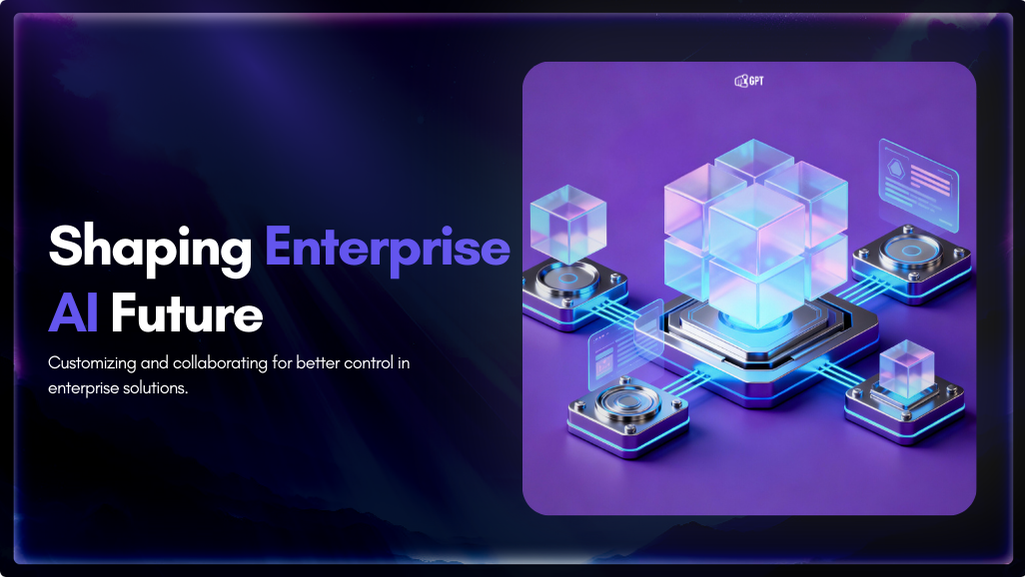
Artificial Intelligence has advanced quickly over the past five years, moving from an experiment to a standard component of modern business. AI has become a central part of enterprise strategy. 88% of organizations are now using AI. This figure has increased from 78% the year before. This transformation is reshaping how companies run, communicate, and […]

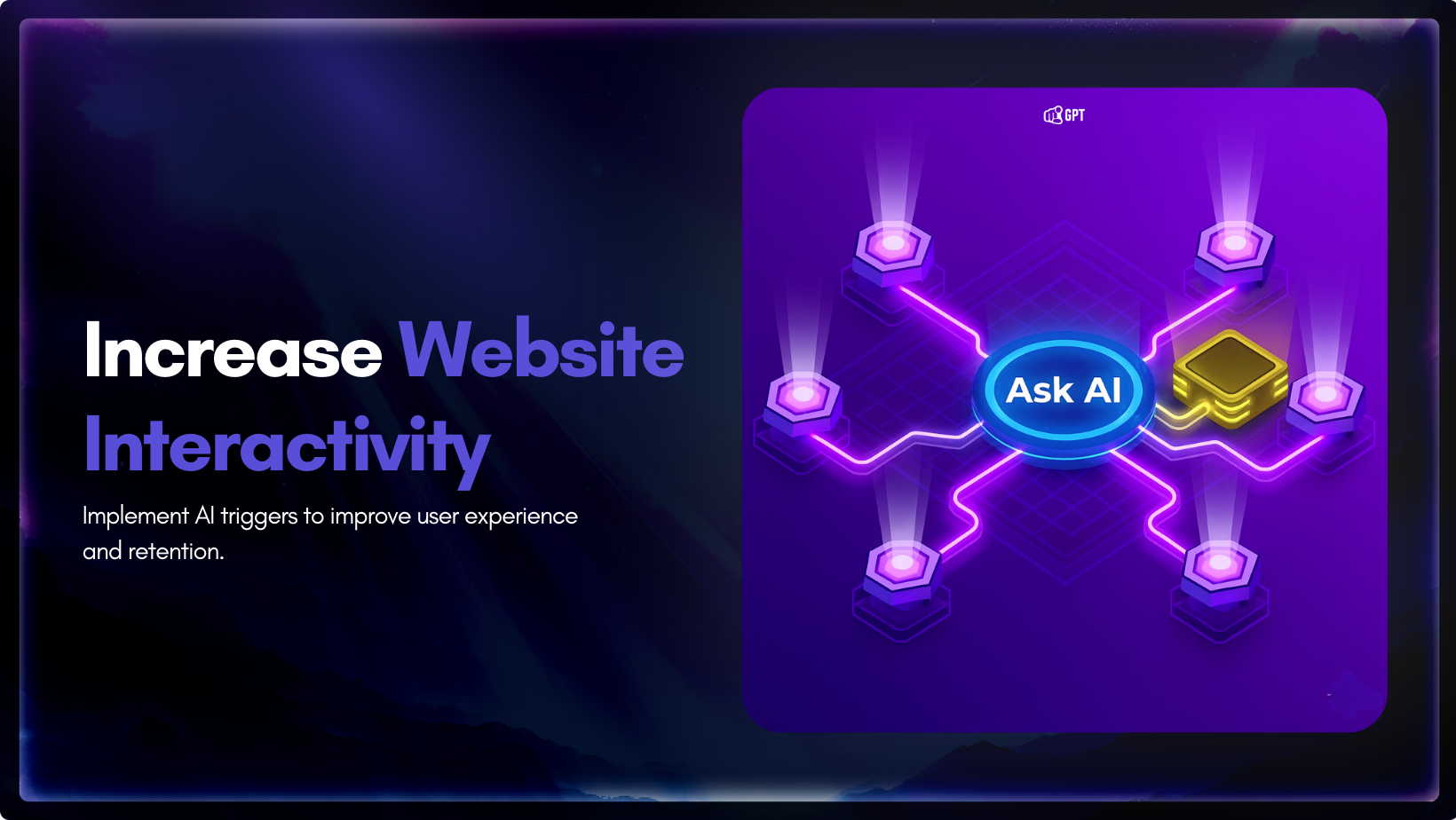
You invest time writing your website copy. You explain features, pricing, and how everything works. The information is there. Still, some visitors leave without clarity, and small gaps in understanding often stop them from moving forward. This happens because a static page cannot adjust to what they want at that moment. They skim a section, […]

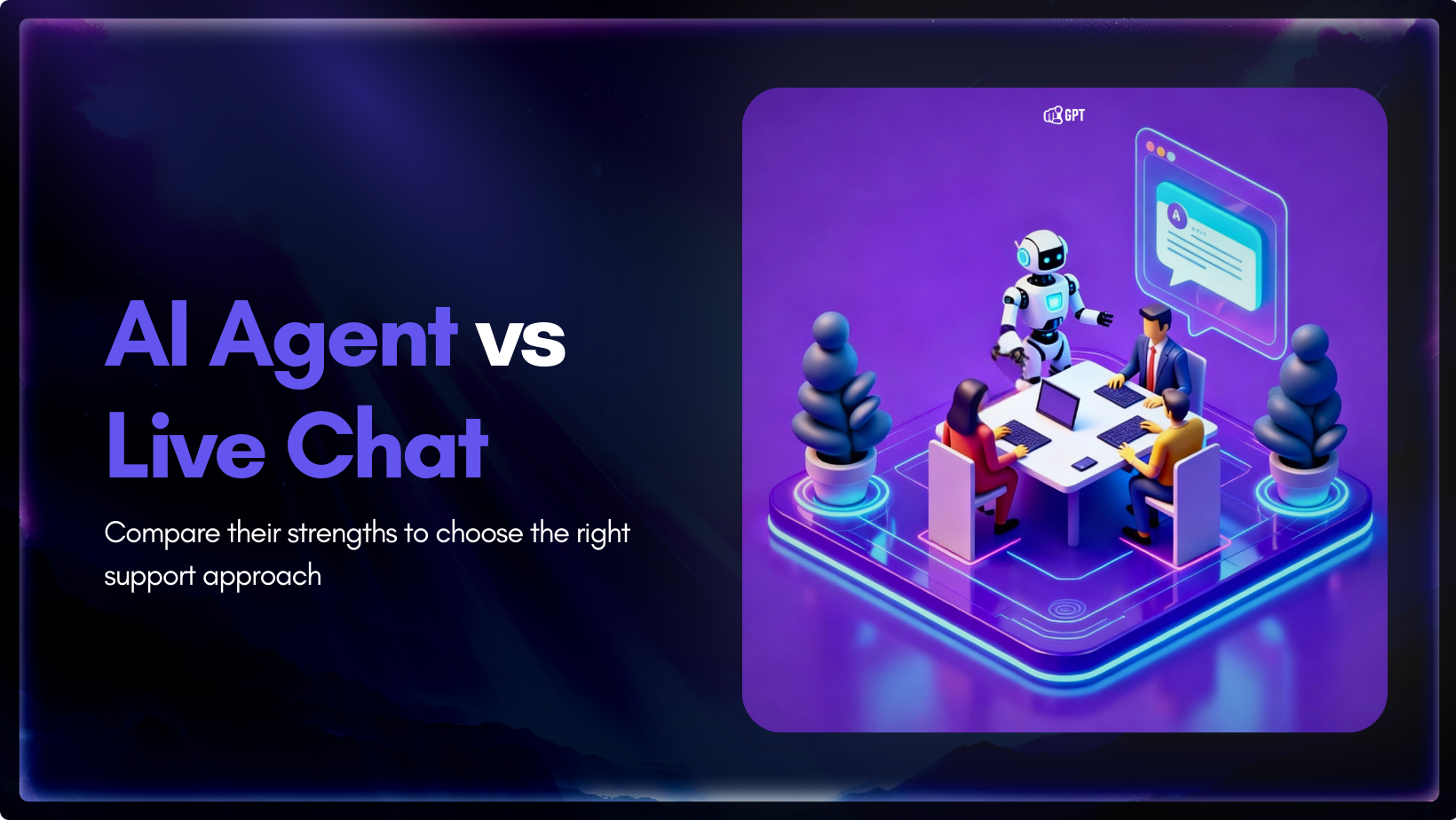
AI agent and live chat each play a different role in customer support, and the choice between them influences how a team handles growth. Companies are moving toward faster support models, and one clear trend is the use of AI to reduce operating costs by up to 30%. The difference shows up when ticket volume […]

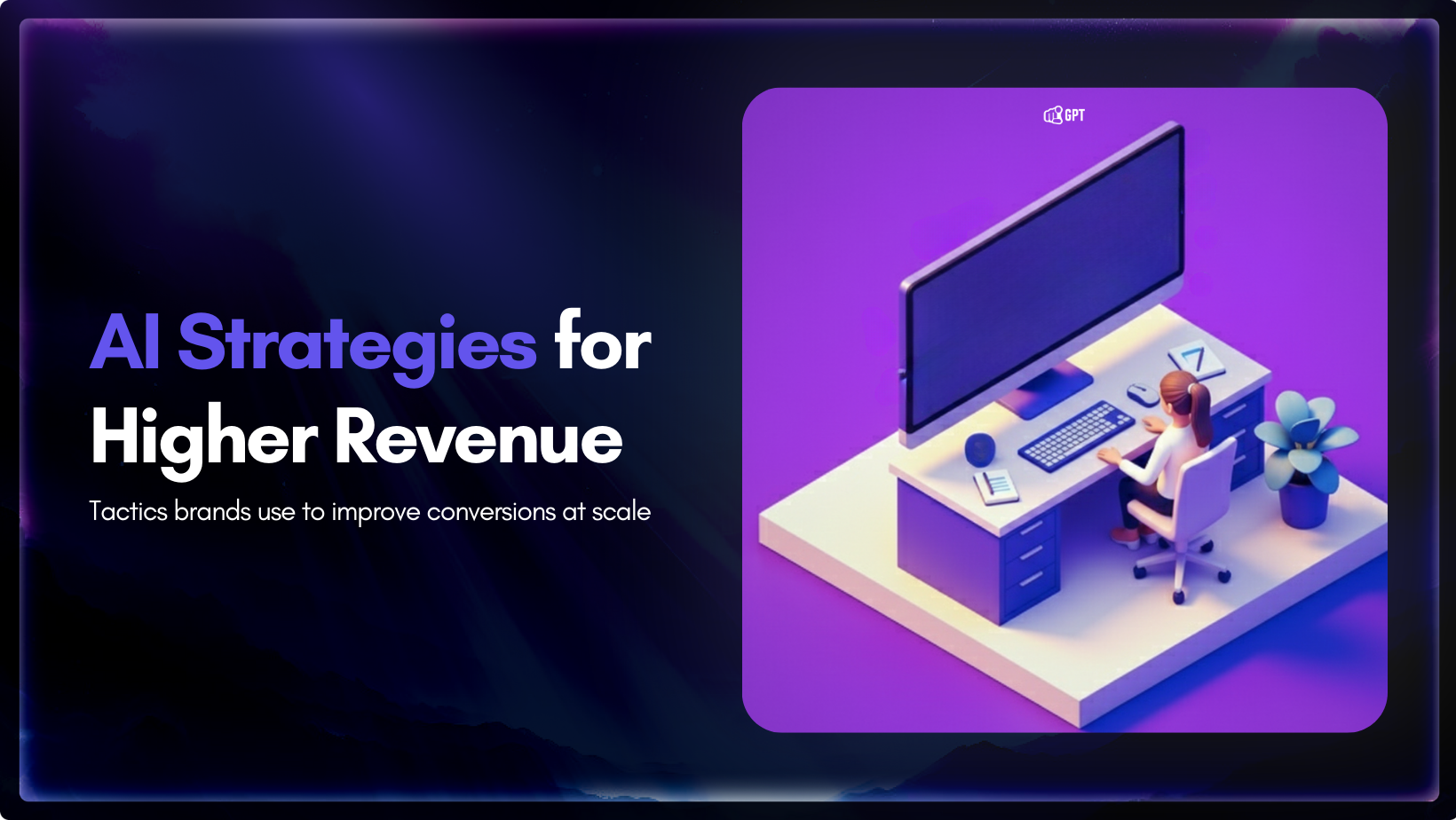
You have definitely heard about the use of AI in marketing. But have you ever seen or learned how it can actually drive revenue? Well, firms using AI in marketing and sales report significant benefits. According to a recent study by McKinsey & Company, revenue increases from AI show up most in marketing and sales, […]

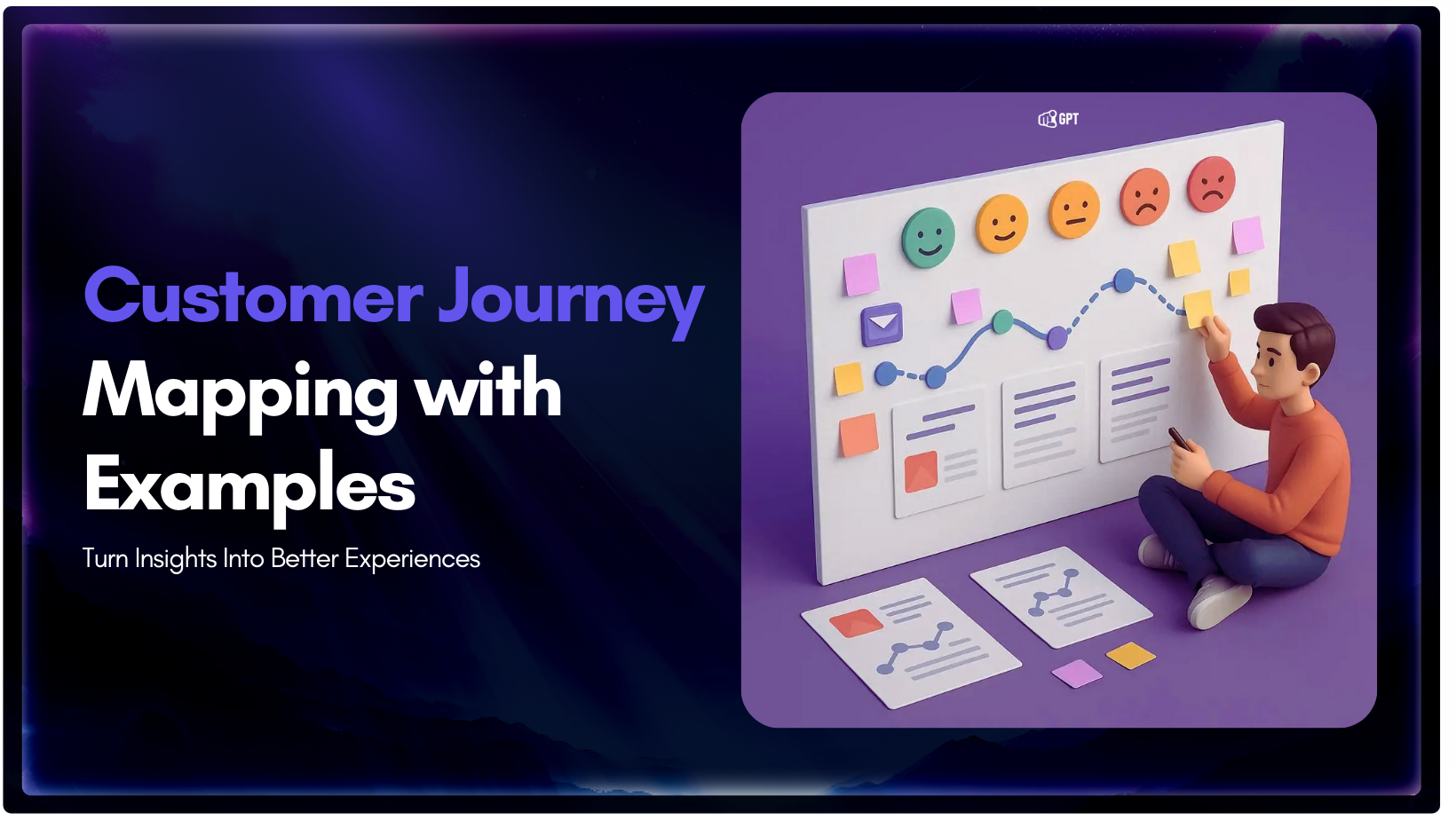
Every business talks about improving customer experience, but many struggle to understand what that experience actually looks like from the customer’s side. This is where a customer journey map becomes essential. It is a practical way to see how people discover your brand, evaluate their options, make a purchase, and decide whether to come back […]

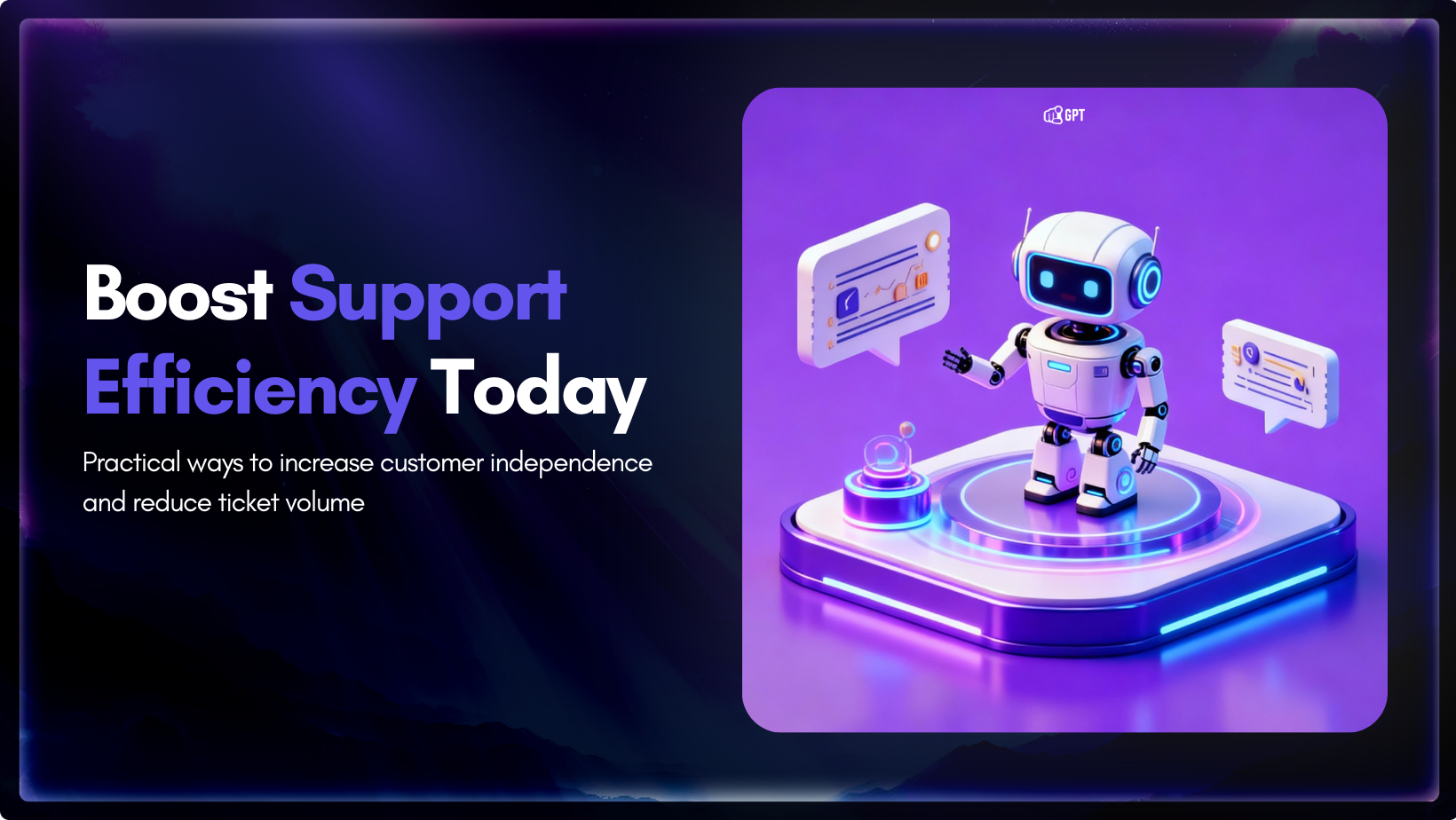
These days, self-service options is the norm for customer support. However, simply having a knowledge base or chatbot is no longer enough. The most important thing is to determine if these tools are effective. Are your customers getting the answers they need? Or are they simply becoming increasingly irate and will eventually contact your support […]
